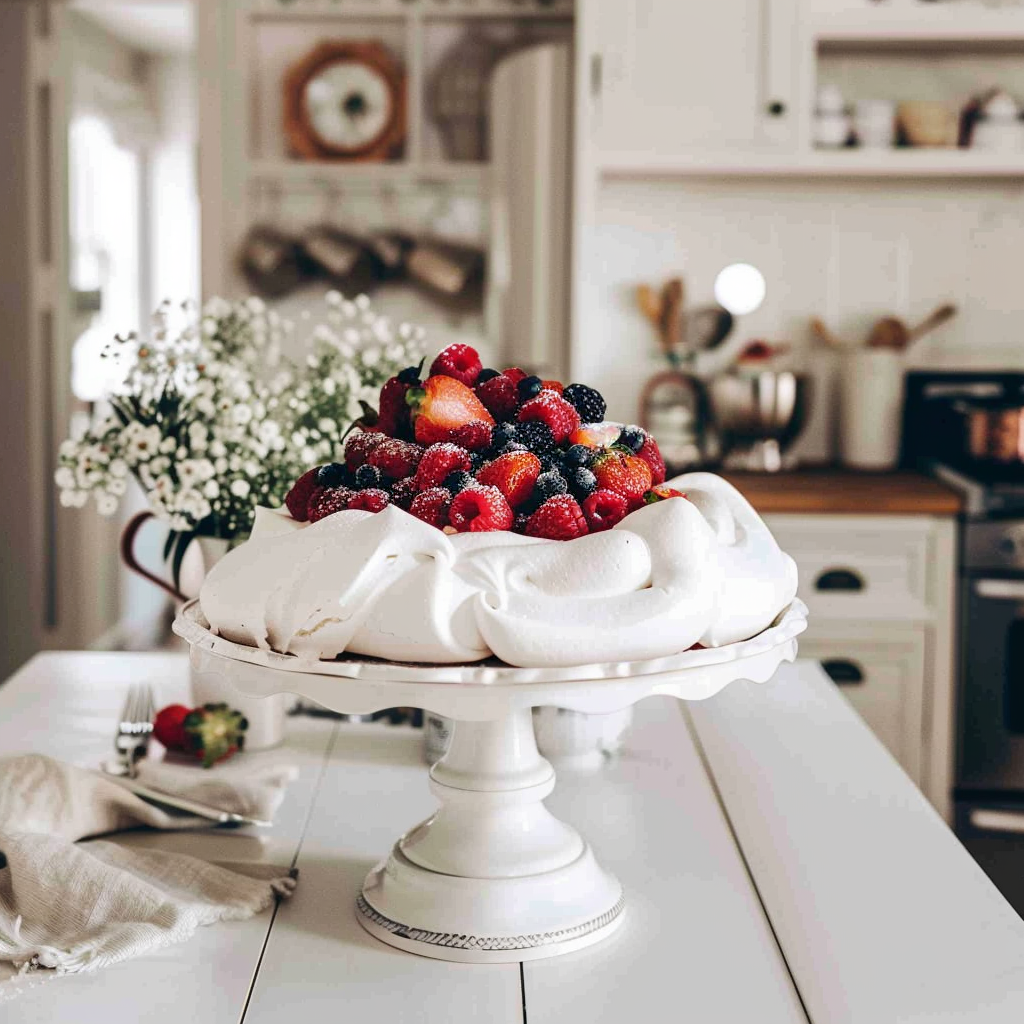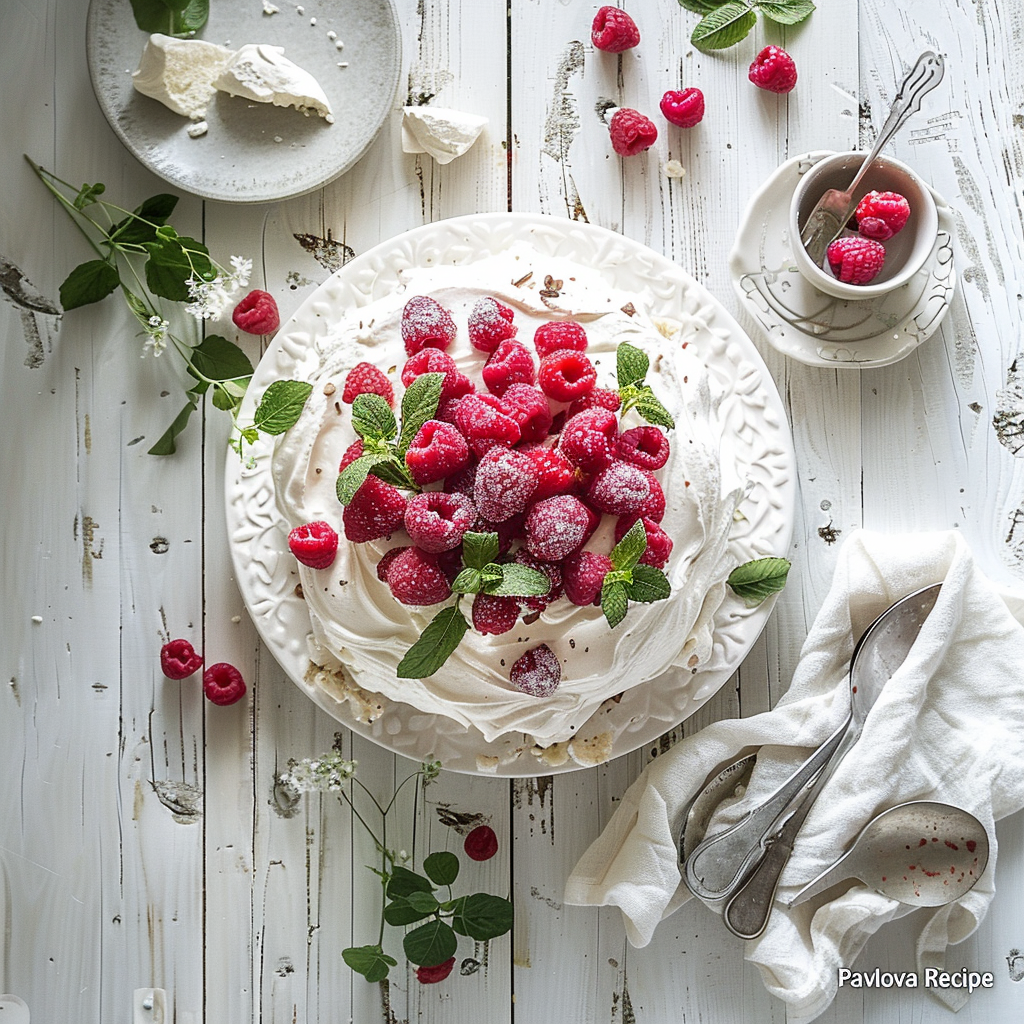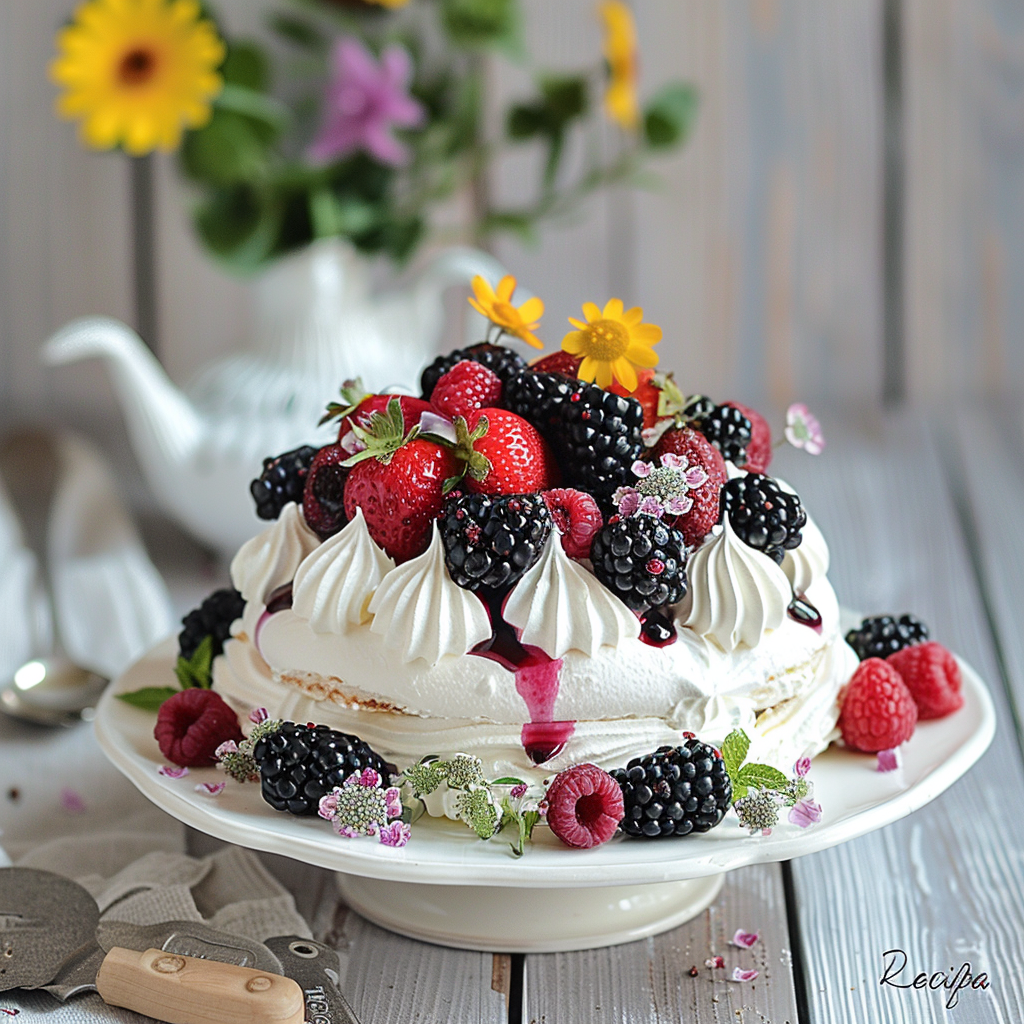Hey there, it’s Jacob Allen from Beyond the Bayou Blog. Today, I’m thrilled to share a dessert that holds a special place in my heart—Pavlova. It’s not just a recipe; it’s a journey back to my college days filled with laughter, friendship, and culinary adventures.
During my college years, my buddies and I were always on the lookout for new recipes to try, anything to break the monotony of cafeteria food. One day, we stumbled upon the Pavlova recipe while flipping through an old cookbook at a thrift shop. Intrigued by its elegant simplicity, we decided to give it a shot.
Gathering in our tiny kitchen, we each took on a task, putting our hearts into creating this unfamiliar dessert. Serving it alongside refreshing fruit punch was a stroke of genius.
Now, whenever I whip up a Pavlova, it’s not just about the taste; it’s about revisiting those cherished college memories. Come join me in reliving those sweet moments through this timeless dessert recipe!
Overview: How to Make Pavlova Recipe?

Imagine a light and airy dessert that’s crisp on the outside and marshmallowy on the inside, topped with billows of whipped cream and fresh fruits. That’s pavlova! This iconic Australian and New Zealand dessert is a delightful meringue-based treat named after the famous Russian ballerina, Anna Pavlova. Making pavlova is a breeze, requiring just a handful of ingredients and some basic kitchen equipment.
To whip up this heavenly dessert, you’ll need four large egg whites, caster sugar, cornflour, white vinegar, and vanilla extract. The process starts with beating the egg whites until they form soft peaks, then gradually adding in the caster sugar until the mixture becomes thick and glossy. Fold in the cornflour, white vinegar, and vanilla extract to stabilize the meringue.
Once the meringue mixture is ready, simply spoon it onto a lined baking tray, shaping it into a circle or oval, and create a slight indentation in the center to hold the toppings later. Pop it into the oven and let it bake until it’s crisp on the outside and dry to the touch. After baking, let it cool completely in the oven with the door slightly ajar to prevent it from collapsing. Finally, top your pavlova with whipped cream and an assortment of fresh fruits before serving. Voila! You have a gorgeous pavlova ready to impress your guests with its heavenly taste and stunning presentation.
Pavlova Recipe
Equipment
- Electric mixer
- Baking tray
- Parchment Paper
Ingredients
- 4 large egg whites
- 1 cup 200g caster sugar
- 1 tsp cornflour
- 1 tsp white vinegar
- 1/2 tsp vanilla extract
- Whipped cream and fresh fruits
Instructions
- Preheat your oven to 150°C (300°F) and line a baking tray with parchment paper.
- Using an electric mixer, beat the egg whites until soft peaks form.
- Gradually add the caster sugar, a spoonful at a time, while continuing to beat, until the mixture is thick and glossy.
- Add the cornflour, white vinegar, and vanilla extract, and gently fold them into the meringue mixture.
- Spoon the mixture onto the prepared baking tray, shaping it into a circle or oval, and create a slight indentation in the center to hold the toppings.
- Place the pavlova in the oven and immediately reduce the temperature to 120°C (250°F).Bake for about 1 hour and 15 minutes, or until the pavlova is crisp on the outside and dry to the touch.
- Turn off the oven and let the pavlova cool completely inside the oven with the door slightly ajar.
- Once cooled, carefully transfer the pavlova to a serving plate and top with whipped cream and fresh fruits.
Notes
Nutrition
My 3 Personal Tips For Pevlova Recipe
Tip 1. When beating the egg whites, make sure your mixing bowl is clean and free of any grease or residue. Even a tiny bit of oil can prevent the egg whites from reaching their full volume, so give it a wipe with some vinegar or lemon juice just to be sure.
Tip 2. Don’t rush the cooling process! Letting the pavlova cool completely in the oven helps it maintain its shape and prevents it from collapsing. It’s tempting to peek, but trust me, patience pays off with a perfectly crisp exterior and marshmallowy interior.
Tip 3. Experiment with different toppings to add your own personal touch. While classic whipped cream and berries are divine, don’t hesitate to get creative. Try passion fruit, kiwi, or even a drizzle of chocolate sauce for an extra decadent twist. The possibilities are endless!
How do I know when the pavlova is ready to come out of the oven?
I always look for a crisp, dry exterior and a slightly creamy interior. If it’s firm to the touch and has a pale, creamy color, it’s usually good to go. But remember, every oven is different, so keep an eye on it towards the end of the baking time.
Opt for Fine White Sugar

When preparing this classic pavlova recipe. It’s crucial to ensure the sugar is free from any traces of fat contamination. Avoid using sugar that has been previously used as a pie weight for making pie crusts, as it may have absorbed butter, affecting the texture of your pavlova.
Three Foods that Pair Wonderfully with Pavlova:
- Fresh berries (such as strawberries, raspberries, and blueberries)
- Passionfruit coulis
- Whipped cream
Can I use store-bought whipped cream instead of making it from scratch?
While homemade whipped cream is always a treat, store-bought whipped cream works perfectly fine too. Just make sure it’s chilled before serving, and nobody will be able to tell the difference!
Bonus Pointers
Use an inverted cake pan. For shaping (saves you drawing a circle on paper) and also ease of transferring the Pav to a platter. There is nothing sadder than pulling a perfect Pav out of the oven, only to have it crack when transferring it to the serving platter!
Use Fresh Eggs. It’s essential to use fresh egg whites from whole eggs, rather than carton egg whites, when making pavlova. Carton egg whites are pasteurized and lack the protein structure needed to form a stable meringue.
Additionally, older egg whites have a weaker protein structure, making them prone to deflating easily. To ensure your pavlova holds its shape, opt for fresh egg whites whenever possible. Though they may not whip up as much initially, the resulting meringue will be more stable due to the stronger protein structure in fresh egg whites.

